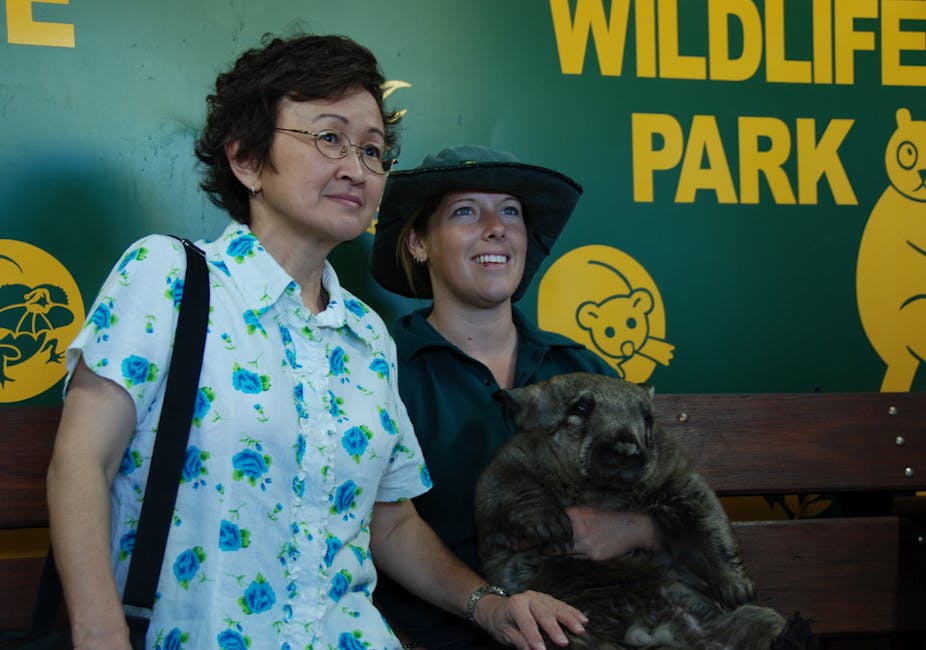I recall attending a World Tourism Organisation [WTO] Conference in Tasmania ten years ago, where it was predicted that China would become the both the largest outbound travel market as well as the largest inbound travel market by 2020.
All indications are that China is on track to assume the number one position in terms of visitor arrivals in Australia, and other Approved Destination Status countries, and significant growth in Australian outbound travel to China in recent years is also helping to fulfil that WTO prophecy.
However, to reveal the full story behind this purported “boom” in Chinese arrivals to Australia, it is worth further analysing market profiles, reasons for visiting and expenditure patterns of Chinese visitors.
Competition
The Chinese outbound travel market comprises only about 10% of the total population of China, mainly those residing in the major provinces and wealthy enough to travel overseas. Of those 130 million wealthy Chinese, about 40 million travel overseas annually, of which Australia’s share is 400,000, or about 1%. That is on par with Australia’s share of all international travellers, so it appears that we are “holding our own” in terms of global market share.
However, there are inherent difficulties in targeting market share as an indicator of success, as we cannot control for the actions of our competitors, who are also aggressively targeting the Chinese market, mainly the 100 ADS countries.
The United States, for example, has allocated $50 million for tourism marketing in China and countries like Japan, Korea and Singapore are already attracting Chinese visitors. It may be that other ADS countries are better placed to meet the specific needs of Chinese travellers, particularly those that are price competitive, have more favourable exchange rates, better shopping or a more substantial Chinese diaspora population.

Segmentation
In 2010, some 21% of Chinese visitors to Australia came for educational purposes, but accounted for 51% of Total Inbound Economic Value (TIEV).
The education segment also skewed the average age of visitors, so that 31% of Chinese visitors were aged 15 to 29 and average length of stay blows out to 112 nights. Questions must be asked about the extent to which the tourism sector benefits from this segment, comprising one third of Chinese visitor arrivals and one half of Chinese visitor expenditure.
The profiles of the remaining segments of 44% holiday, 17% visiting friend and relatives [VFR] and 16% business also raises some questions. The fastest growing segment is VFR, which may have very different spending patterns compared with the other segments. The main destinations for all segments are the gateway cities of Sydney, Melbourne, Brisbane and Adelaide (where most education centres and our Australian Chinese population are located), with the regions receiving only 7% of Chinese arrivals in 2010.
The business travel segment has been declining since 2005 and particularly in 2008 and 2009 in response to the global financial crisis, but is showing signs of recovery in 2010. However, it is the problems existing in the pleasure/holiday segment that provide the most cause for concern.

Problems
Previous studies indicate the Chinese pleasure/holiday segment is price sensitive, and is more likely to prefer a lower price package tour. This compromises the quality of accommodation and tour itinerary by tour operators and results in lower levels of visitor satisfaction.
Other unscrupulous inbound tour operators have been found to have engaged in unethical business practices such as restricting itineraries to shops that provide secret commissions, charging for free tours of places such as the Sydney Opera House, poorly trained tour guides and misleading information regarding visitor safety in order to control the group.
First-time travellers, usually on package tours, are most susceptible to these practices, not only compromising the quality of visitor experience, but also generating negative word-of-mouth messages back in China. This has already been found in a study of Chinese visitors in Victoria.
Boom and bust
There have been comparisons between the inchoate Chinese and Japanese travel markets but apart from the economic strengths of their respective economies, there is absolutely no similarity in the way that these tourism markets performed.
Whereas the Japanese market was predominantly pleasure holiday visitors with a propensity to spend money (albeit in Japanese owned hotels and retail outlets) and time in urban and regional Australia, Chinese tourists have very different visitor profiles and expenditure, purpose of visit and main destinations.
Currently in Australia about half of Chinese arrivals are accounted for by the education, not the tourism sector, while half is being bussed around gateway cities on package tours.
Hence, it appears that Chinese travel is re-defining the boom and bust cycle that has characterised Australian tourism over the last few decades, leaving many tourism operators around Australia waiting for the boom (and the bus) to arrive.

